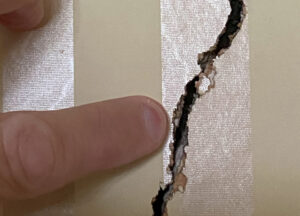Reason for contacting us
A client called us as they were concerned about some cracking on the ground and first floors in their period house in Chiswick, where they had lived for thirty years.
The cracks had recently become worse, which was worrying them.
Pole Structural Engineers Reports were contacted by the owner following recommendations by a local estate agent as they were seeking a reputable, independent, and highly experienced structural engineering firm specialising in the Chiswick and West London area.
Pole service offer
In response to the client’s requirements our qualified Chartered Structural Engineer recommended a General Structural Inspection Report.
There are two distinct types of structural engineers’ reports:
1) A localised, very specific and limited Structural Engineers Defect Report or a Specific Structural Inspection Report (SSI). This was not relevant on this occasion due to the multiple areas of movement.
2) A broader Structural Engineers General Movement Report, or General Structural Inspection Report (GSI), which focuses on matters of cracking and movement only. This was the correct type of report on this occasion.
 Our report
Our report
We found textbook cracking on the ground and first floor within the party wall at the join between the forward and rear halves of the Victorian West London property.
The cracking was located where the wider primary accommodation meets the narrower but original rear projection at the top of the staircase.
Prior to our visit we had noted that the geology was gravel, and therefore the matter was unlikely to be a seasonal clay subsidence issue. We noted that the drains passed close to the flank wall of the rear addition, which could have been contributory.
Our inspection indicated that the cracking was fundamentally long standing, evidenced by previous crack repairs, but it had worsened in modern times following recent building work next door to the property due to vibration induced movements.
Our Findings
We pointed out to the client that the crack was located at the textbook location between front and rear halves of the house. This is often a joint between the two halves of the property, invariably built with little or no mechanical connection between the two halves. Cracking is therefore almost bound to occur at this location from time to time.
We normally find that there is a crack in this location, and it is only a matter of time before the crack opens up slightly due to the slightest ground movement, whether seasonal, drains leakage, or in this case vibrations from next door building work.
Our Conclusions
Pole Structural Engineers Reports recommended that the cracks were repaired using resin injection in conjunction with HeliBar steel rod reinforcement costing something of the order of £1,000-£2,000.
Can we help you?
If you would like advice on any structural aspects of your property, our structural engineers are here to help you so please don’t hesitate to contact us.




